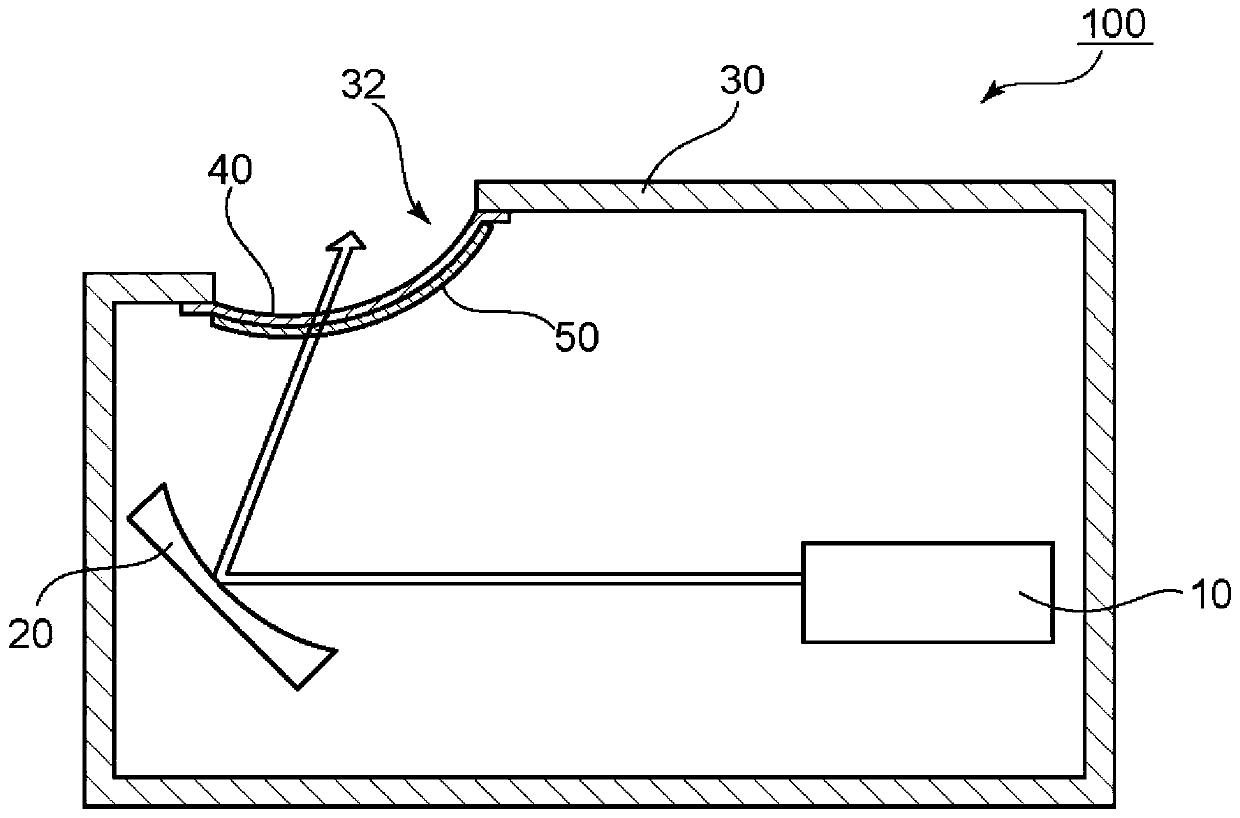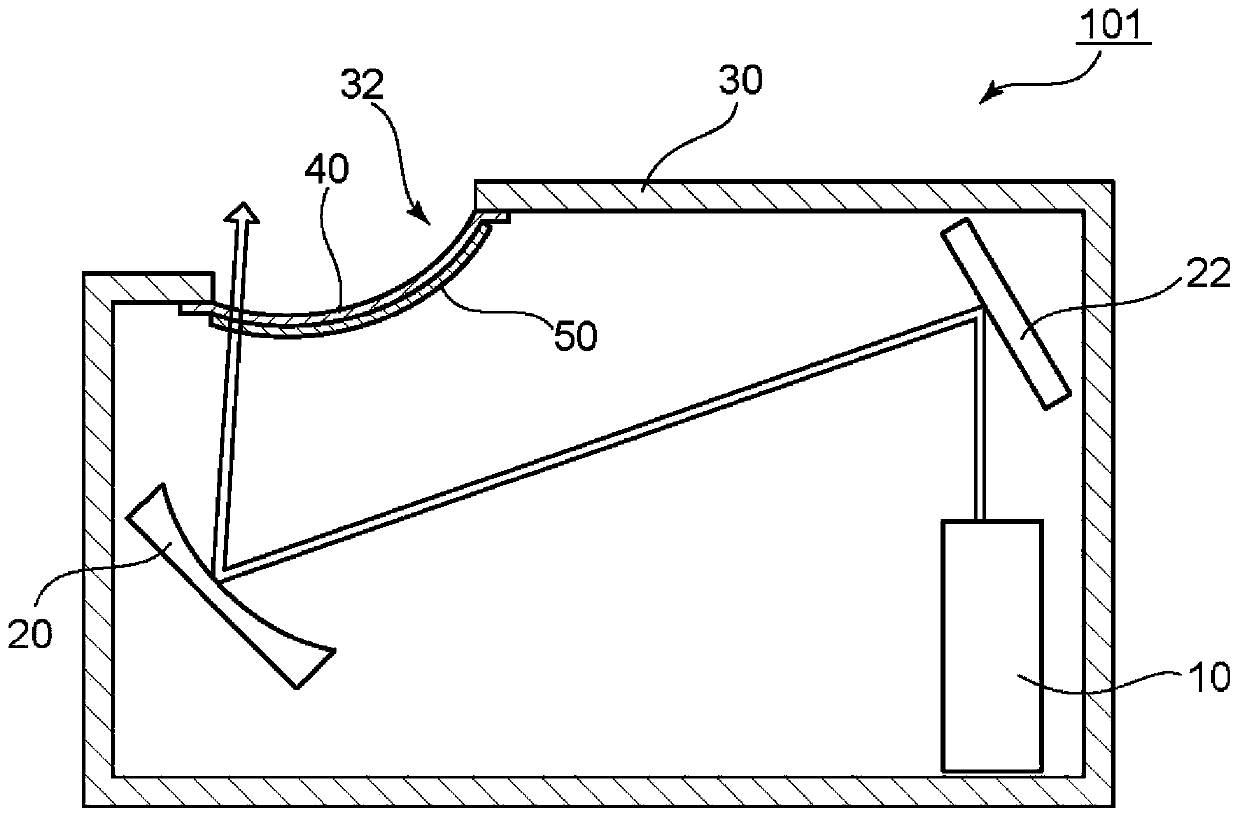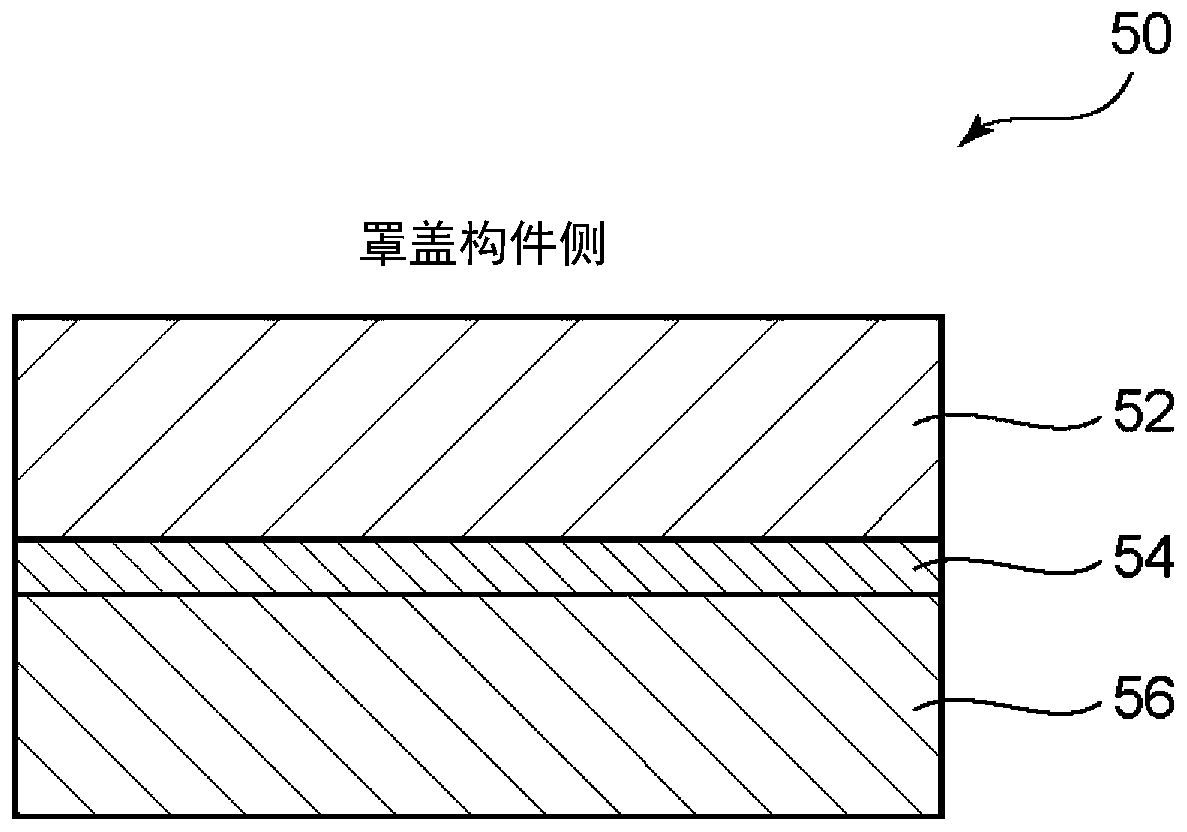Head-up display apparatus
A head-up display and display technology, used in instruments, transportation and packaging, optics, etc., can solve the problems of insufficient heat resistance, reduced visual confirmation, dizziness, etc., and achieve excellent heat resistance and visual confirmation. Effect
- Summary
- Abstract
- Description
- Claims
- Application Information
AI Technical Summary
Problems solved by technology
Method used
Image
Examples
Embodiment 1
[0125] 1. Synthesis of organic pigments (aromatic diazo compounds)
[0126] 4-Nitroaniline was mixed with 8-amino-2 by a conventional method (the method described in Toyo Hosoda's "Theoretical Manufacture of Dye Chemistry, Fifth Edition" July 15, Showa 43, published by Technical Institute, pages 135 to 152). -Naphthalenesulfonic acid undergoes diazotization and coupling reactions to obtain monoazo compounds. The obtained monoazo compound was diazotized by the above-mentioned conventional method, and then coupled with 1-amino-8-naphthol-2,4-disulfonic acid lithium salt to obtain a crude product. This crude product was salted out with lithium chloride, and the aromatic diazide compound of following formula (4) was obtained.
[0127]
[0128] 2. Fabrication of polarizers
[0129] A norbornene-based resin film (manufactured by Zeon Corporation: product name "ZEONOR", ZF14-100) was prepared as a base material, and the surface of the film was subjected to rubbing treatment and ...
Embodiment 2
[0138] Except having changed the retardation film which comprises a retardation layer into the following materials, it carried out similarly to Example 1, and produced the laminated body of a cover member / polarizing plate with a retardation layer. Commercially available polycarbonate resin (manufactured by Mitsubishi Chemical Corporation: trade name "DURABIO D7340") was vacuum-dried at 100° C. for 5 hours, and then extruded with a single-screw extruder (manufactured by Toshiba Machine Co., Ltd., cylinder temperature was 230° C.) , T-shaped die (1700 mm in width, 230° C. in temperature), casting roll (120° C. in temperature) and film-making device of coiler to produce a film with a thickness of 220 μm. The obtained film was stretched 2.5 times at 125° C. to obtain a retardation film having a thickness of 140 μm and Re(550)=3292 nm. The obtained laminated body was subjected to the same evaluation as Example 1. The results are shown in Table 1.
Embodiment 3
[0140] Except having changed the retardation film which comprises a retardation layer into the following materials, it carried out similarly to Example 1, and produced the laminated body of a cover member / polarizing plate with a retardation layer. Commercially available polycarbonate resin (manufactured by Mitsubishi Chemical Corporation: trade name "DURABIO D7340") was vacuum-dried at 100° C. for 5 hours, and then extruded with a single-screw extruder (manufactured by Toshiba Machine Co., Ltd., cylinder temperature was 230° C.) , T-shaped die (1700 mm in width, 230° C. in temperature), casting roll (120° C. in temperature) and film-making device of coiler to produce a film with a thickness of 220 μm. The obtained film was stretched free-end 2.5 times at 122° C. to obtain a retardation film having a thickness of 140 μm and Re(550)=4004 nm. The obtained laminated body was subjected to the same evaluation as Example 1. The results are shown in Table 1.
PUM
 Login to View More
Login to View More Abstract
Description
Claims
Application Information
 Login to View More
Login to View More - R&D
- Intellectual Property
- Life Sciences
- Materials
- Tech Scout
- Unparalleled Data Quality
- Higher Quality Content
- 60% Fewer Hallucinations
Browse by: Latest US Patents, China's latest patents, Technical Efficacy Thesaurus, Application Domain, Technology Topic, Popular Technical Reports.
© 2025 PatSnap. All rights reserved.Legal|Privacy policy|Modern Slavery Act Transparency Statement|Sitemap|About US| Contact US: help@patsnap.com



